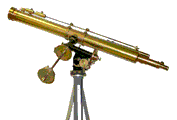Department of Physics and Astronomy: Publications and Other Research

M. Eugene Rudd Publications
Document Type
Article
Date of this Version
1992
Citation
M. Eugene Rudd, Science on the Great Plains: The History of Physics and Astronomy at the University of Nebraska-Lincoln. Lincoln, NE: University of Nebraska Studies: new series no. 71, 1992. xii+168 pp.
Abstract
The year 1988 marked the 100th anniversary of the founding of the Department of Physics at the University of Nebraska. While the year passed without fanfare in the department, DuaneJaecks, one of the members of the faculty, suggested to the author that it would be a good time to write a history of what is now the Department of Physics and Astronomy. He not only provided the initial impetus for the project, but has also given it his continual help and encouragement. While the initial plan was to write only a brief, informal departmental history, the project, like Topsy, grew. An attempt has been made to not only tell the story of the founding, subsequent growth, and development of the department, but also to relate its history to state, national, and world events since they have often had a profound influence on the department.
When the Nebraska legislature established the University of Nebraska on June 2, 1869, the stated object was "to afford to the inhabitants of the State, the means of acquiring a thorough knowledge of the various branches of literature, Science, and the arts." Evidently, the lawmakers had the teaching function of a university clearly in mind, but at that time the other usual function of a university, that of producing new knowledge through research, was evidently not yet considered to be an activity suitable to be supported by public funds. Nebraska, which had joined the Union only two years before, was still largely a frontier state. The population was small and money was scarce. Many lived in sod huts and relatively few had any interest in supporting education, let alone anything as remotely related to their lives as scholarly research. So, it is not surprising that no research was done in physics or astronomy during the university's first three decades. What is surprising is that research was begun as early as it was.
Even well into the present century, research at the University of Nebraska was still thought of as an expensive frill to be pursued only during vacations, holidays, and other spare time using borrowed or makeshift apparatus. In spite of this attitude, the first chairman of the department, DeWitt Bristol Brace, was able to carry out important investigations at the forefront of physics and brought the new department into a position of international prominence at the tum of the century. The question of the place of original research and its relationship to teaching is one of the interesting themes that recurs throughout the history of the department.
After Brace's untimely death, the department went through a long period of decline, as measured on the scale of national and international prominence, largely as a result of a lack of funds and overwork of the professorial staff. While the university as a whole has often suffered from a shortage of funds to do the projects its professors wished to do, science departments, with their reliance on apparatus and supplies for laboratory work, were particularly restricted by lack of money. The dependence of the activity of the department, especially its research activity, on the economic condition of the university, the state, and the nation is another prominent theme of this study.
After World War II the support of scientific research in this country was, to a large extent, taken over by the United States government. Federal grants and contracts for research combined with increased state support for faculty and buildings and new sources of private support allowed for a rapid increase in the breadth and depth of the department and its facilities during the 1960s. As a result, by the end of that decade it had onc~ again achieved widespread recognition for its research.
Astronomy, as an academic subject, began at the University of Nebraska under the protective wings of the, Physics Department, but soon combined with meteorology to become a separate department. The unsuccessful struggle of its long-time chairman, Goodwin Swezey, to build an adequate astronomical observatory on the campus is an especially poignant story. Taken over by the Mathematics Department in the 1930s, astronomy eventually declined in popularity and was dropped from the curriculum by 1962. A few years later, it underwent a rebirth in the Physics Department where it has grown in staff and facilities far beyond the dreams of Professor Swezey.
Just as physics has been the mother of many new branches of science, the Physics Department has also been the mother of two other university departments in addition to astronomy. The Electrical Engineering Department at Nebraska began with the electricity courses in the Physics Department during the last two decades of the 19th century. And in the 1960s it was a member of the Physics Department who created the Institute of Computational Science, of which the present-day Department of Computer Science was a part. The events leading up to the creation of these departments are recounted in this history.
As far as the professorial staff was concerned, the most recent decade and a half has been a time of unusual stability in the department and until very recently, no new professors were added and very few retired or left. With a relatively favorable economic situation, this has allowed growth and diversification in the research program and improvements in teaching which have led to a strong and versatile department.
Included in
Astrophysics and Astronomy Commons, Higher Education Commons, Physics Commons, Science and Mathematics Education Commons


Comments
University of Nebraska Studies: new series no. 71
Published by the University at Lincoln: 1992
© 1992 by the Board of Regents of the University of Nebraska